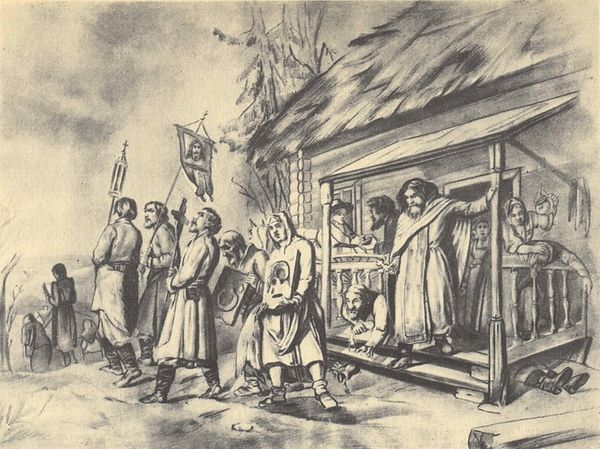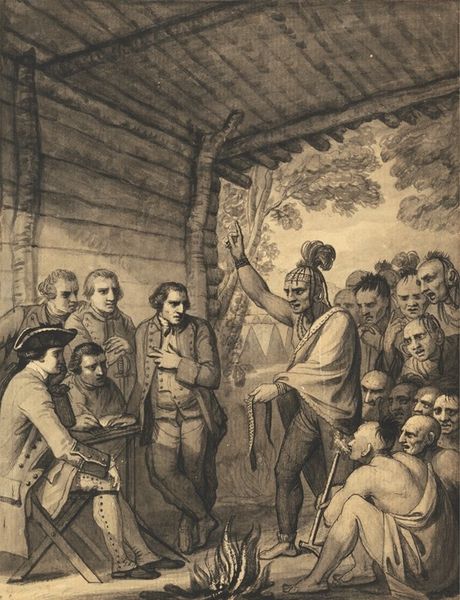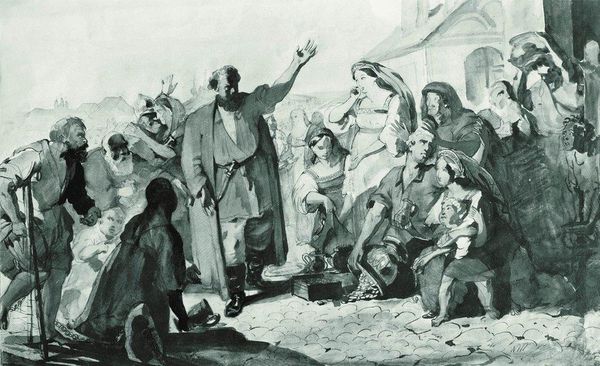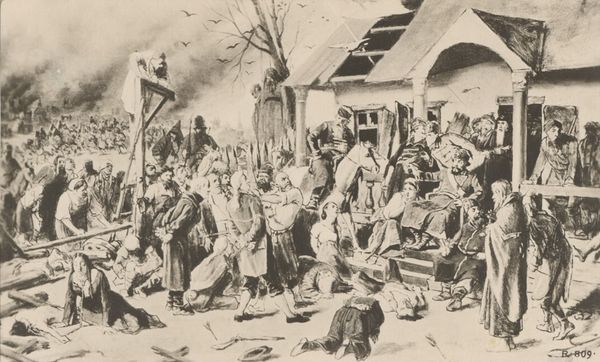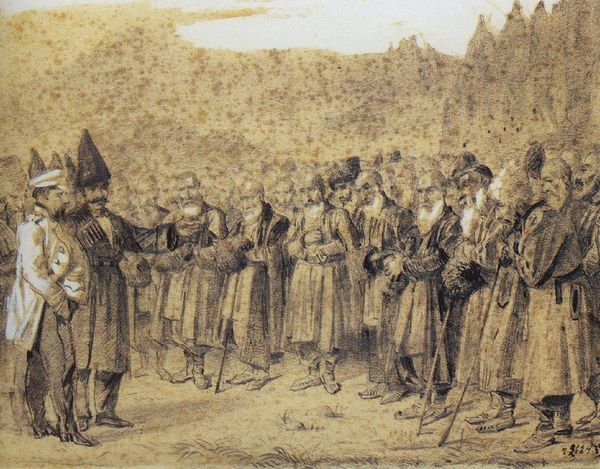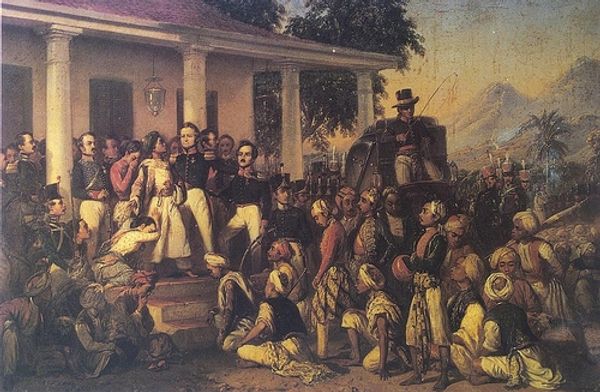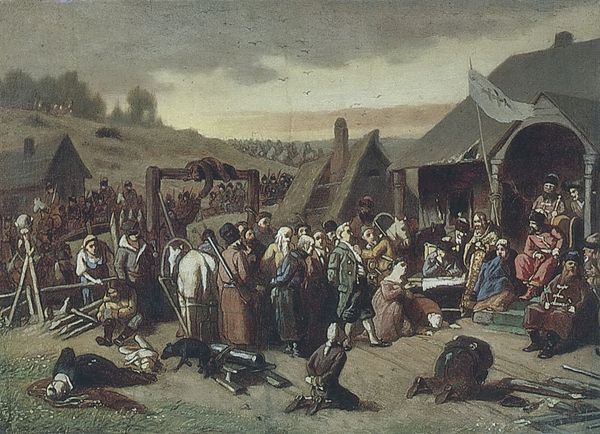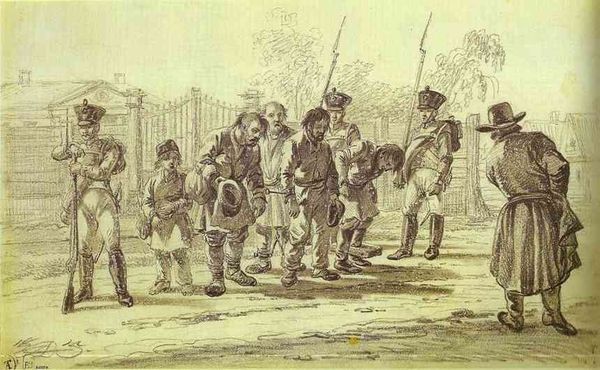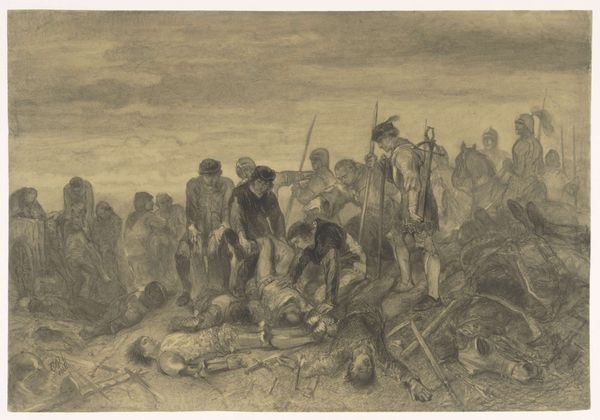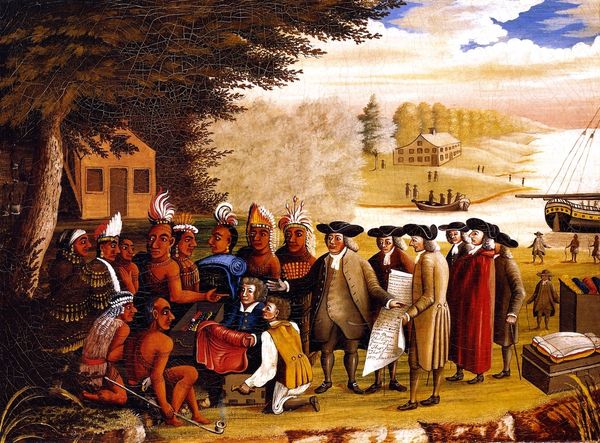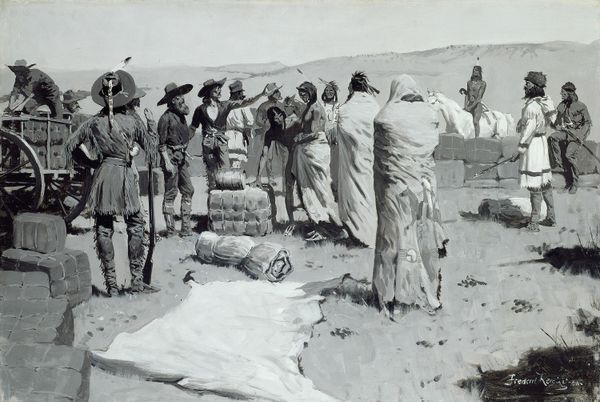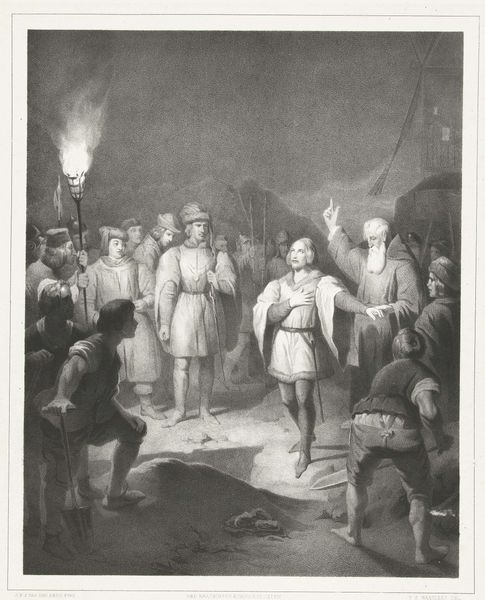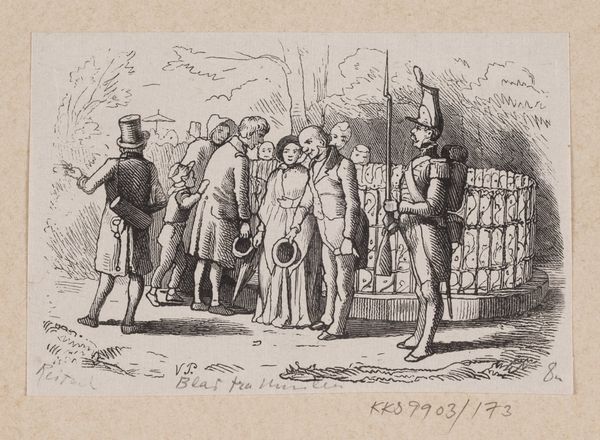
Dimensions: 53 x 67 cm
Copyright: Public domain
Curator: What strikes me immediately about Vasily Perov's "Procession on Easter," executed around 1862, is the stark realism—a mood of solemn observation captured primarily in charcoal, ink, and watercolor. The sepia tones give the piece a nostalgic feel, almost like a faded photograph. Editor: Indeed. It evokes a strong sense of the past, doesn't it? Perov, as a keen social observer, frequently depicted the lives of the peasantry. Here, we witness a religious procession, but what’s telling is the contrast between the ritual's supposed sanctity and the palpable sense of hardship reflected on the faces of the participants. Curator: You're right. There’s a distinct division. Notice how the procession, carrying religious icons, is juxtaposed with the ramshackle structure and the disheveled individuals in the doorway. The priest, almost theatrical with his gestures, seems worlds apart from the prostrate figure below. Editor: Precisely. The composition is cleverly divided, with the procession on one side and the ramshackle home on the other, bridged only by the clergyman. One could argue Perov utilizes chiaroscuro to underscore the stark contrast between the church’s teachings and lived reality of the people. What's also remarkable is the level of detail achieved with, as you mentioned, the limited tonal palette, giving everything a unifying feel of dust and light. Curator: It's Perov’s commentary on the socio-political dynamics of Russia at the time. The Orthodox Church wielded immense power and influence, and such religious processions were a common spectacle, often imposed on a struggling population. Editor: I would agree. Yet I think we need to highlight his masterful understanding of how lines guide the viewers through various elements. The diagonal lines of the wooden porch seem to direct attention from right to left into the gathering crowd. Curator: He invites us, as viewers, to question the meaning behind these traditions, and how religious institutions addressed these everyday experiences. Perov provides a sobering depiction that resonates beyond just religious ceremony and penetrates the lived reality of people struggling through very real hardships. Editor: Yes. I agree. When we look at the application of tonal variation to depict an apparently somber Easter celebration, a tension surfaces between devotional purpose and everyday circumstances that invites consideration of a very human dimension to the artwork.
Comments
No comments
Be the first to comment and join the conversation on the ultimate creative platform.
